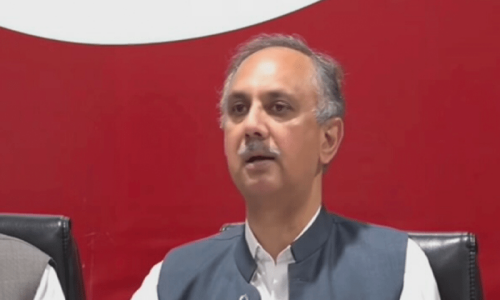
HYDERABAD: Provisional results of the sixth population census in the country have not gone down well with nationalist parties of Sindh who are of the opinion that influx of people into the province from other parts of the country has not been truly reflected in the figures in spite of the fact that the migrating population continues to have a direct bearing on the province’s infrastructure.
Rejecting the census figures, Qaumi Awami Tehreek president Ayaz Latif Palijo claimed on Saturday that Sindh’s current population was bound to be 70 million and not 47.89m or so as stated in these figures. “I urge the Sindh Assembly to reject these figures and a resolution should be tabled in the upper and lower houses of parliament as well while the matter should also be taken up in the Council of Common Interests (CCI) immediately,” he remarks.
Quoting an increase in the population of Bengalis in Karachi as per their own claim, Mr Palijo insists that while their numbers have increased from 100,000 in 1971 to three million in 2017, Sindh’s population has surprisingly increased only to 40m from 10m in 1971. “It shows as if family planning measures are being adopted in Sindh alone and nowhere else,” he says.
SUP chief agrees with the proposition of Sindh being the most urbanised province
He terms the figures as a table story notwithstanding the fact that population figures/trends are monitored globally like temperature. “I believe Pakistan’s population is around 240m, not 200m,” he says, adding that while Sindh is being termed as the most urbanised province then where the actual growth rate figures are.
Sindh Untied Party (SUP) president Syed Jalal Mehmood Shah also finds fault with figures. But he agrees with proposition of Sindh being the most urbanised province. “Population growth rate is natural. What I am concerned with is population migration from other parts of Pakistan and within Sindh is not being accounted for in real terms. This migration is simply for economic reasons,” he says.
Predominantly, he says, it is Afghan factor that is ubiquitous in urban centres, like Karachi and Hyderabad and even in Jamshoro. He says that this factor ought to be given serious consideration. Mr Shah’s assessment is that actual census figures’ analysis could only be done once district-wise trend of populations is in hand.
“As long as ratio of influx is missing we can’t have true assessment and that’s why we have reservations over figures,” he says. Economic migration, he believes, has increased post-2010 super floods. He says that while Afghan population, legally and illegally, in mixed settlements would be hard to count but there are many pure Afghan settlements.

Abdul Khaliq Junejo, chairman of his own faction of Jeay Sindh Mahaz, asserts that there are two important points that need to be considered in the census. Firstly, who is a permanent resident and what is the actual number of population that lives in Sindh. “People with divergent views in politics tend to agree over influx of people into Sindh and there are no two opinions,” he says.
He adds that overall growth rate remains surprisingly on the lower side in spite of the fact that Sindh is being ranked as the most urbanised province. “Our apprehensions prove correct that Sindh’s indigenous population is being under-reported and we had expressed these fears much earlier,” Junejo says.
Prof Mushtaq Mirani, an analyst, opines that unnatural growth rate is shown in provisional figures. “It appears that Afghans who are reaching Balochistan are counted as local population as is evident from 3.37pc growth. We in Sindh where there is influx of people from Balochistan and Khyber Pakhtunkhwa also have just a natural population growth rate of 2.41pc.”
Interestingly, he says, KP is an area from where population tends to migrate to other areas but it continues to have a growth rate of 2.89pc.
Awami Tehreek president Ghulam Nabi Khoso says that the census figures are result of conspiracy of ‘enforced disappearance of Sindhi nation’.
These statistics, he says, are pre-determined. “It seems that rulers have learnt no lessons after excesses against Bengalis and Pakistan’s disintegration,” he says.
Published in Dawn, August 27th, 2017














































